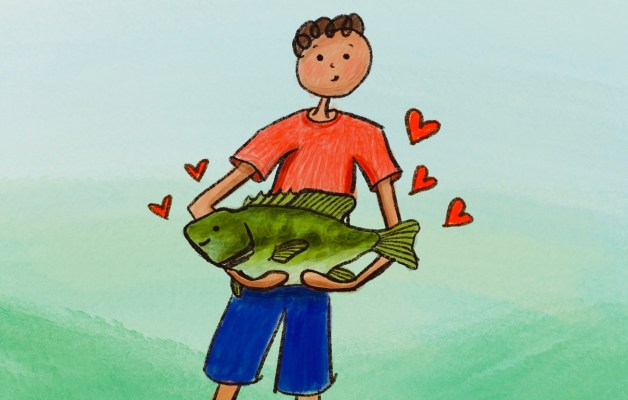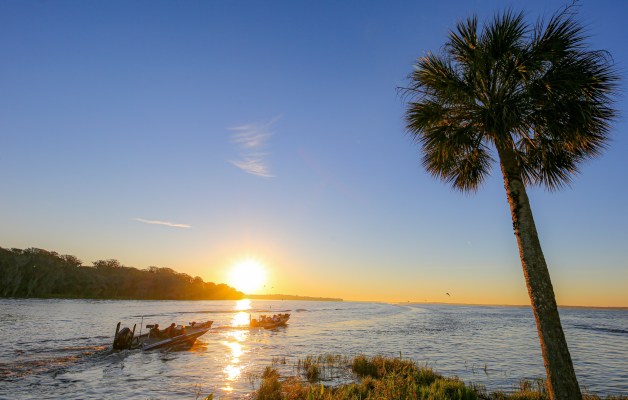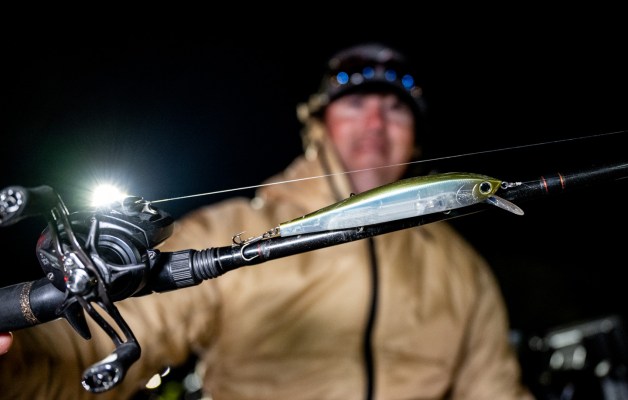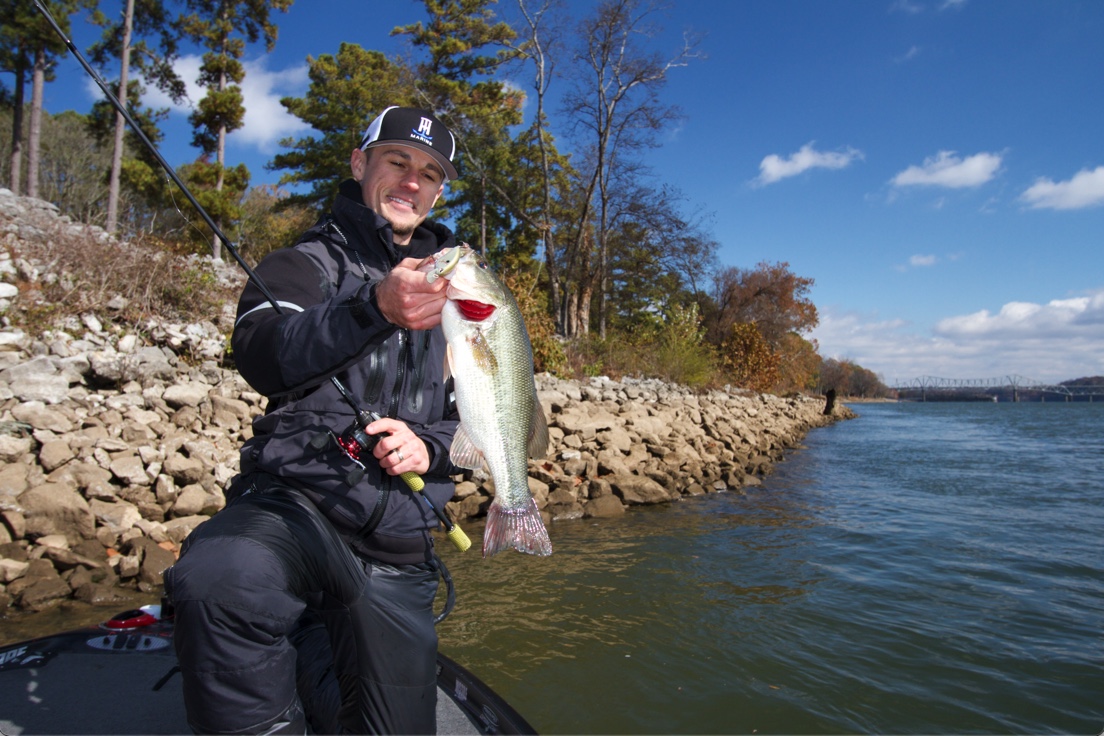
Experienced anglers disdainfully call them “chamber of commerce days.” The prettiest of recreational boating scenarios, with clear skies, zero wind and lots of sunshine, make the local promoters proud to show off their natural resources.
Sounds lovely, right? It is — unless you’re a bass angler. Then it’s front-row seating on the struggle bus.
That’s because these aesthetically pleasant days of “bluebird” conditions follow cold fronts — the seasonal reality of fall through early spring. Spoiler alert: Fishing a cold-front cycle is not a lost cause; it just takes some strategic adjustment. (More on that in a moment.)
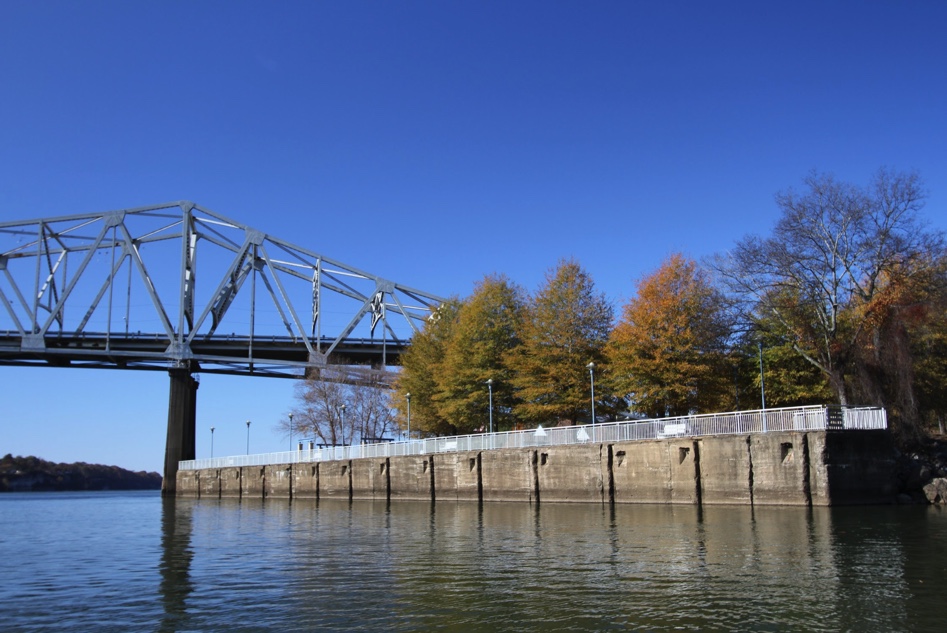
“A cold front can drop the water temperature by a few degrees to 6 or 8 degrees,” says two-time Bassmaster Elite Series champion John Crews. “In my experience, it takes a couple of days for the fish to get back to normal. Once they do, they really go to biting, but right afterwards it can be pretty tough.”
To understand a cold front’s impact, we need a brief meteorological lesson. The National Center for Atmospheric Research describes a weather front as the transition between two air masses at the Earth’s surface. An approaching cold front wedges its denser cool air under lighter warm air, which then rises into the troposphere.
The elevated warm air moving ahead of the cold front produces cloudy conditions and thunderstorms. Gusty winds accompany the front’s passage, along with rain — sometimes severe weather — and a significant temperature drop.
Also, atmospheric pressure changes from falling ahead of the front to rising after the front. Barometric fluctuation can stimulate fish feeding, but once it breaches the “high-pressure” threshold — over 30.2 inHg (inches of Mercury) — opportunity declines.
Measure The Moment
Cold fronts vary in severity, and that’s simply a matter of how much cold air drops in from way up north, how much air the system pushes and how much, if any, precipitation it brings.
Temperature: When judging a cold front’s impact, one of the most important measurements comes from overnight lows. A sharp nighttime temperature drop typically means slim pickings the next morning, as the fish bury into vegetation, huddle around rocks, docks and other hard cover or suspend in deeper water.
In such scenarios, Elite rookie Bryant Smith said that, unless he’s fishing a tournament, he finds little reason to launch before midmorning. Sure, a couple of fish might bite at daybreak, but he strongly recommends waiting until the sun brings that water back up to a more comfortable level.
That being said, veteran Elite Series pro Bill Lowen points out that a passing front often delivers a flurry of daybreak activity as fish seek to gobble a few quick meals during the low-light period before the intense sunshine of the looming postfrontal conditions sends them into hiding. Lowen’s advice: Always fish your best areas right at daybreak to capitalize on the brief period of opportunity.
“I think they know the weather’s about to get nasty and they’re just trying to feed up for the next couple of days when things are going to slow down and they’re not going to be so aggressive,” Lowen said. “We, as humans, we know the weather is coming, and when the cold front arrives, we’re like, ‘I’m tired of this cold and I’m tired of this wind and I’m not coming out of the house.’”
Wind: The approaching weather system will definitely shake the trees, break up the surface, decrease visibility and stimulate feeding. Reaction baits like crankbaits, spinnerbaits and bladed jigs work well in the wind. Conversely, the slick-calm conditions following a front can curtail some of this feeding aggression.
Precipitation: When cold fronts bring rain, the runoff will muddy tributary creeks and other inflow points. As Lowen explained, muddy water can become productive after a few days, as the turbidity actually absorbs heat from the sun and creates a warmer zone that attracts fish.
However, bass anglers know that cold, muddy water is the kiss of death. Like, stay-home-and-work-in-the-yard level futility. Pick your days and don’t waste them on lost causes.
Productive Patterns
When approaching fronts bring cloudy, windy conditions and falling barometric pressure, bass are most likely to roam and search for food. The fish can sense the approaching weather change, and they’ll do their best to fill their bellies before the tough conditions arrive.
“On the front side (of the weather system), when I feel like they’re going to be a little more aggressive, I’m going to use a moving bait where I can cover water,” Lowen said. “That could be a Strike King Thunder Cricket (bladed jig), a flat-sided crankbait or a spinnerbait. I’m not necessarily moving fast, but I’m moving along at a good pace and covering water.
“Typically, I want to be fishing around some type of cover, like grass, stumps, rocks — anywhere those fish might be positioned for feeding.”
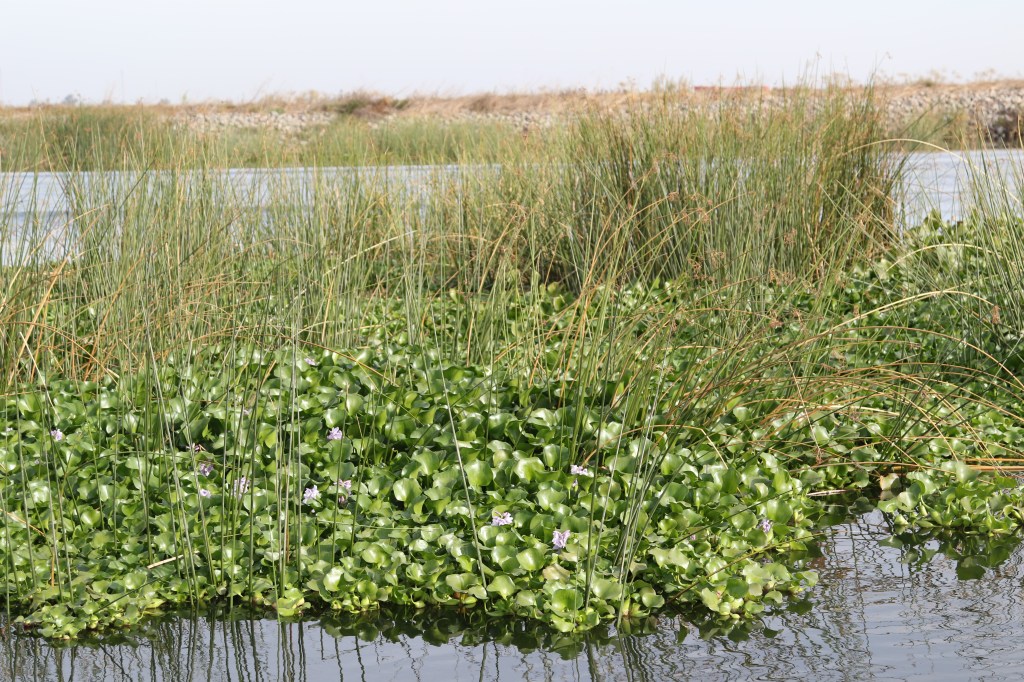
The aggressive feeding typically continues through the front’s passage, although the weather often becomes rougher than most anglers care to endure. Then comes that dreaded postfrontal period, and if you want to tempt a fish into biting, you have to play their game.
Refuge Needed: Ever wake up to a cold morning and all you want to do is bury your head under the blanket? Fish are no different, but tucking as deep into shallow vegetation or as far under a dock as they can reach also serves a practical purpose.
Bass have no eyelids, so their only defense against that intense sunlight is overhead cover. There’s also some thought that high pressure creates a discomfort that further prompts the fish to seek cover.
On weedy, Southern lakes, any matted vegetation, lily pads, hyacinth or spatterdock offers prime cold-front shelter. Lowen knows that punching a Texas-rigged soft-plastic bait with a heavy sinker through this cover often triggers a reaction bite.
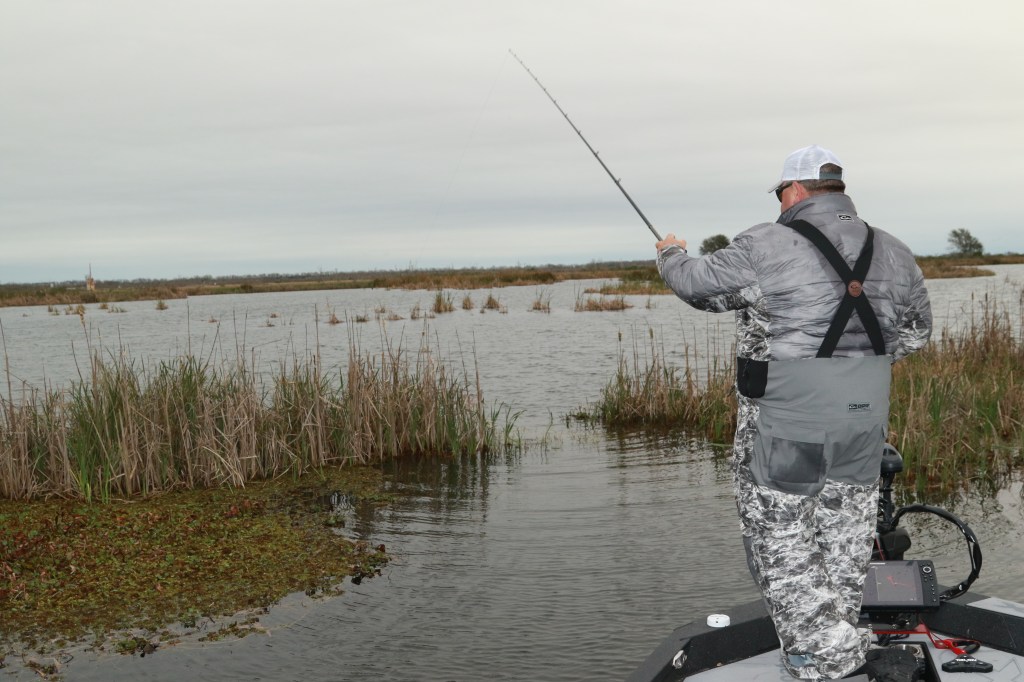
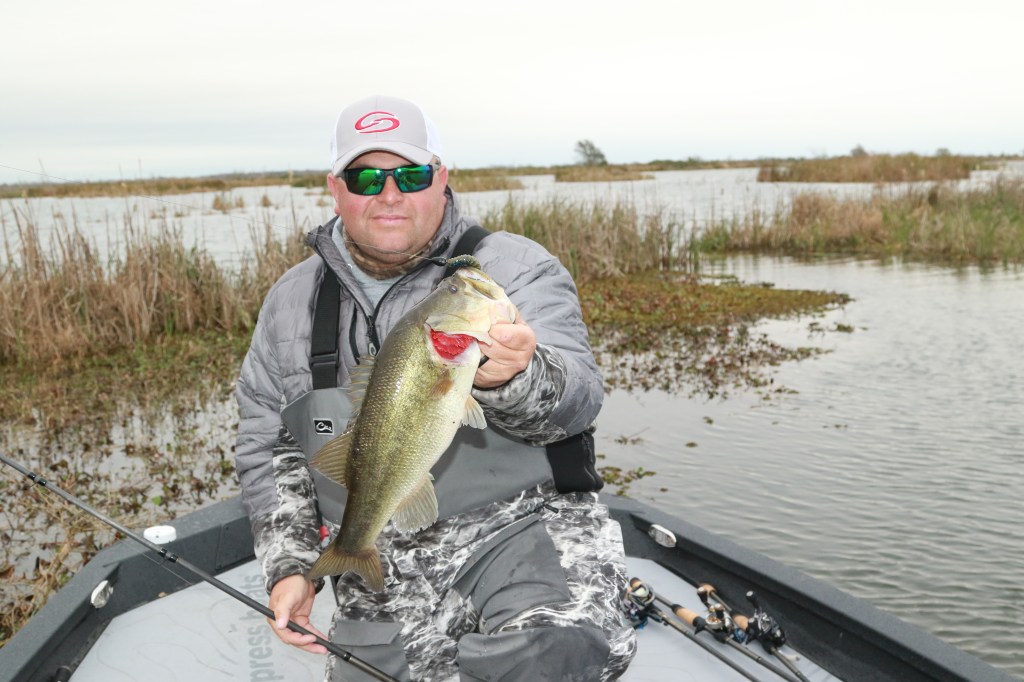
“That matted vegetation holds a lot of heat,” Lowen said. “Three or four degrees makes a huge difference to a fish when the water’s cold.”
Head Downstairs: In deeper water bodies, especially those lacking significant vegetation, bass will avoid the bluebird conditions by descending lower in the water column. Afternoons and warming trends find the fish gradually adjusting upward.
That’s why vertical rock walls, aka “bluffs,” are popular cold-season targets. The fish can hug a solid structure and simply descend and ascend as needed to find cozy water temperatures. The same is true for deep reservoir boat slips that may have 30-plus feet of water beneath the dock floats.
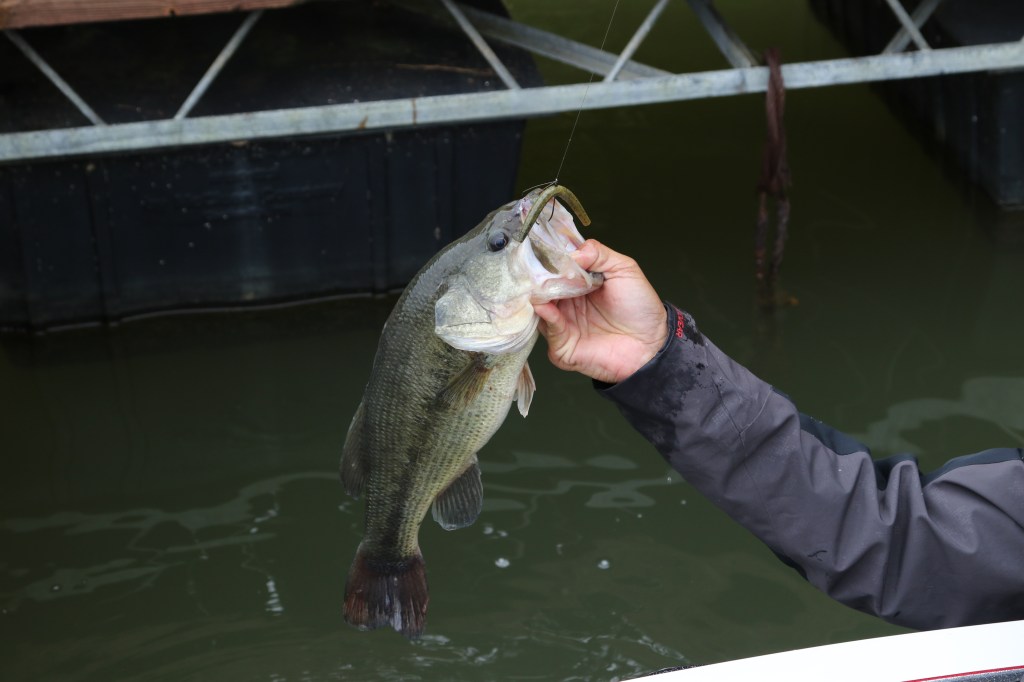
Sinking or suspending jerkbaits are a popular option for postfrontal bass holding lower in the water column. You’ll also tempt them by free-falling a wacky-rigged stickworm (add a nail weight to the head if you need to reach the fish faster), while a jigging spoon or an underspin with a subtle minnow trailer will deliver when warmer conditions spur greater activity.
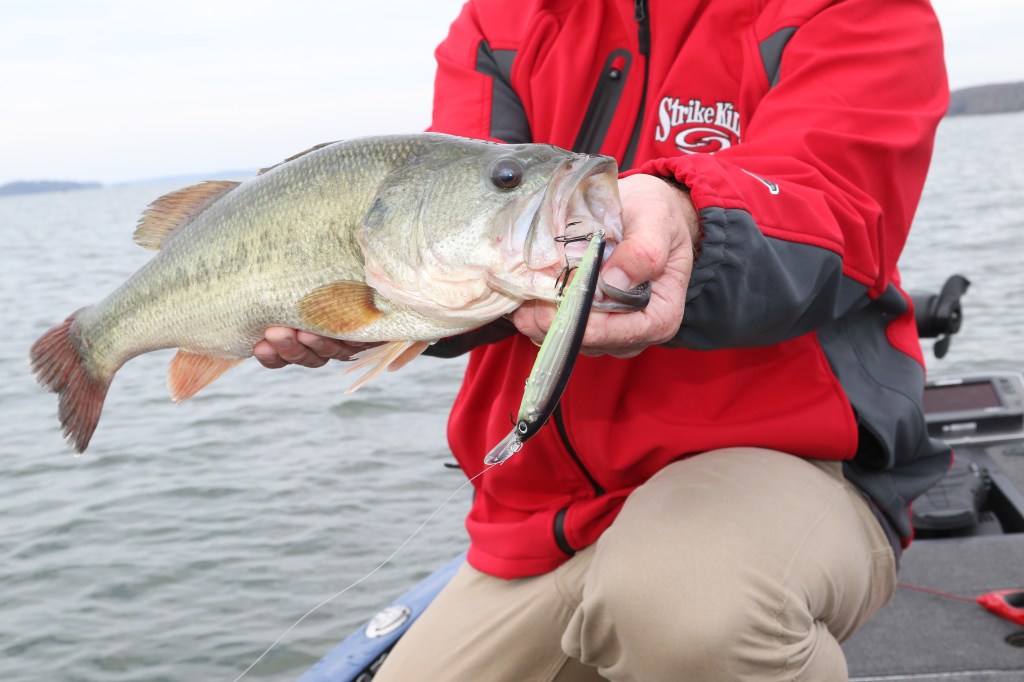
Downsize: Bass metabolism slows considerably during winter, but cold fronts also see their appetites decline. While warmer months find the fish pouncing on hefty baits, colder scenarios bring smaller finesse-style offerings to the forefront. Drop shots with 4- to 6-inch worms, Ned rigs, minute finesse jigs with modest trailers and scaled-down Carolina rigs get the job done.
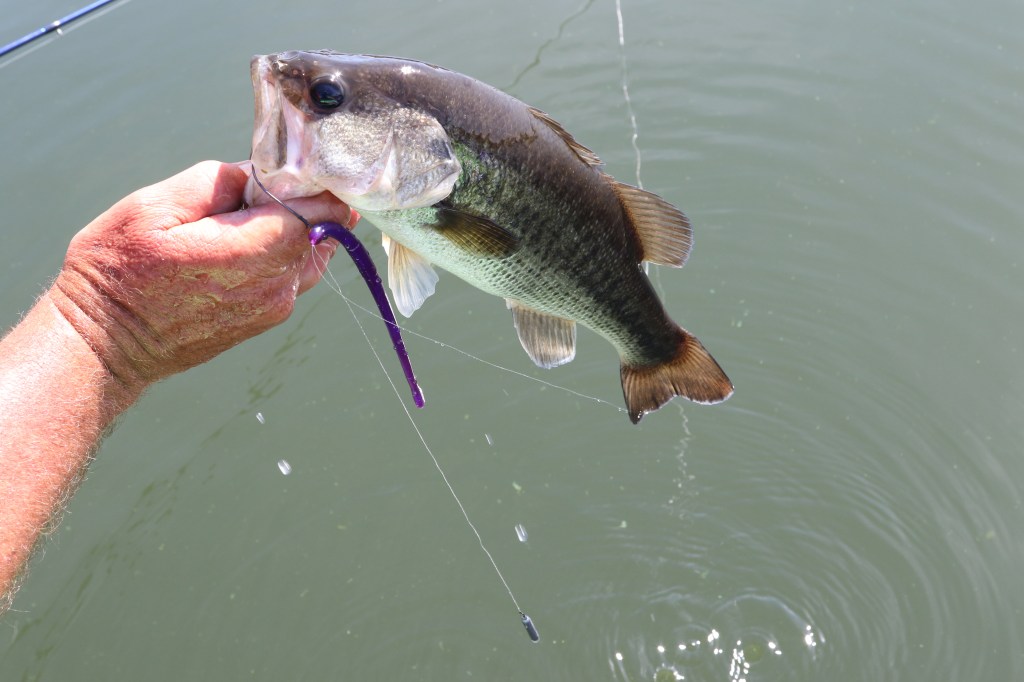
Slow And Subtle: Lowen stresses minimal movement, both in bait form and angler-imparted action. Streamlined plastics — straight-tail worms on shaky heads, along with craws, creature baits and jig trailers — fished at a glacial pace are the way to go.
“The other thing I like to do is deadstick the bait,” Lowen said. “That’s where you let the bait sit still around an area where you (suspect fish may be holding).
“You just leave it there and shake it in place before moving it along. During postfrontal conditions, that presentation will get you more bites than hopping it or fishing it really fast.”
Take It All In Stride
Without question, cold fronts change the bass fishing game, at least temporarily. However, while understanding what’s happening equips you for the proper adjustments, Lowen believes the most important part of the playing field is the space between your ears.
“Don’t let the (weather) affect you as an angler,” he urges. “Every time we have a cold front, we are often beaten before we even make our first cast.
“We know the bite’s going to be tough; we know the conditions are not going to be warm the way we like; so, you have to get yourself in the right mindset to know that conditions are not going to be favorable to fishing and start there.”


